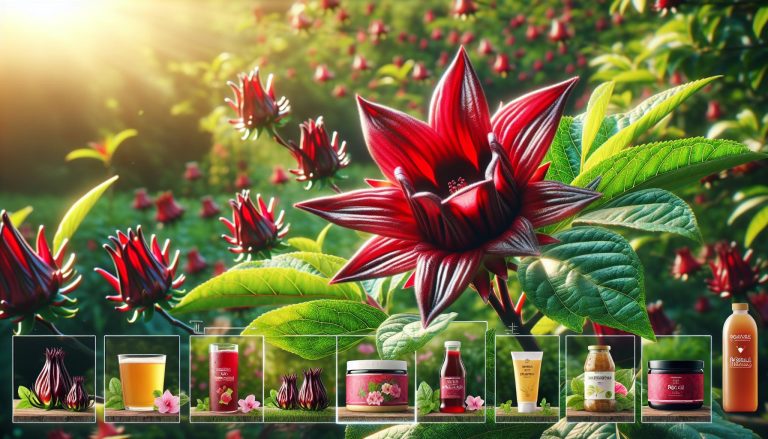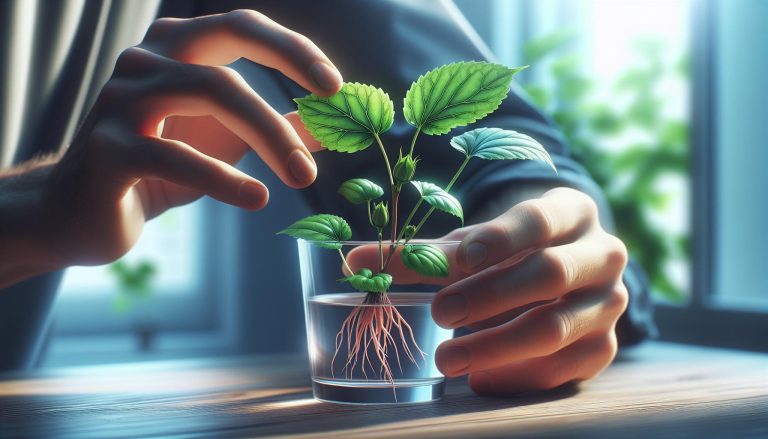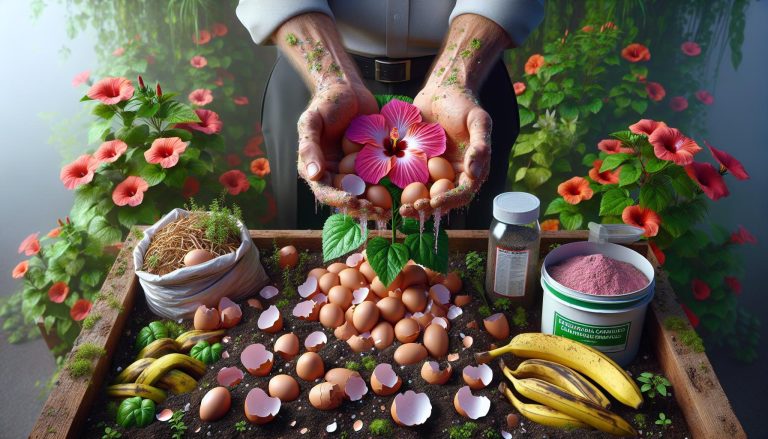Hibiscus Syriacus – Growing Tips, Care Guide, and Uses for Your Garden
Have you ever wondered what makes Hibiscus syriacus, also known as Rose of Sharon, a favorite among gardeners? This stunning shrub boasts vibrant, trumpet-shaped flowers that can transform any landscape into a colorful paradise. But there’s more to this plant than its eye-catching blooms.
Why does Hibiscus syriacus thrive in a variety of climates, and how can you ensure it flourishes in your garden? In this article, I’ll delve into the secrets behind its hardiness, care tips, and the best practices for planting and maintaining this resilient beauty. Whether you’re a seasoned gardener or just starting out, you’ll find valuable insights to make your garden thrive.
Overview Of Hibiscus Syriacus
Hibiscus syriacus, often called Rose of Sharon, belongs to the Malvaceae family. It boasts large, trumpet-shaped flowers. Native to Asia, it has become popular in many regions due to its adaptability.
Characteristics
Hibiscus syriacus typically reaches 8-12 feet in height with a spread of 4-6 feet. It has deciduous leaves, which are green and serrated. The flowers vary in color, with common shades being white, pink, red, and purple. Each flower blooms for a single day, yet the shrub flowers continually from late summer to mid-fall. This shrub differentiates itself with a woody stem and a bushy appearance.
Growth Requirements
It thrives in full sun but tolerates partial shade. The soil needs to be well-drained and slightly acidic to neutral. Watering is essential, especially in dry periods. While it’s drought-tolerant once established, young plants require regular watering.
Hardiness Zones
Hibiscus syriacus thrives in USDA Hardiness Zones 5-9. This range covers a wide spectrum of the United States, making it accessible to many gardeners.
Uses In Landscaping
Its vibrant flowers make it an excellent choice for ornamental purposes. It works well as a focal point in gardens, hedges, or border plants. Its ability to attract butterflies and hummingbirds adds to its appeal.
Pruning And Maintenance
Prune in late winter or early spring. Removing dead or weak branches maintains the plant’s shape and promotes healthy growth. Fertilizing in the spring with a balanced fertilizer supports vigorous flowering. Regular mulching assists in retaining moisture and controlling weeds.
Pests And Diseases
Hibiscus syriacus is generally pest-resistant, though aphids, spider mites, and whiteflies may occasionally present problems. Use insecticidal soap or neem oil to handle infestations. The shrub is prone to fungal diseases like leaf spot and rust. Ensuring good air circulation and avoiding water splash on leaves helps prevent these issues.
Botanical Characteristics
Hibiscus syriacus, or Rose of Sharon, is a deciduous shrub known for its stunning blooms and robust nature. This section covers its growth habit, flower description, and leaf and stem features.
Growth Habit
Hibiscus syriacus grows upright, forming a vase-like shape. It reaches heights of 8-12 feet, with a spread of 4-6 feet. The plant branches out densely, providing substantial foliage cover. Its growth rate falls between medium to fast, often adding 13-24 inches yearly under optimal conditions.
Flower Description
The flowers of Hibiscus syriacus are trumpet-shaped, measuring 2-4 inches in diameter. They come in various colors such as white, pink, purple, and blue, often featuring a darker throat. The blooms appear in late summer and continue until mid-fall, attracting pollinators like butterflies and hummingbirds. Each flower lasts a single day, but the shrub consistently produces new ones.
Leaf and Stem Features
The leaves of Hibiscus syriacus are green, ovate, and coarsely toothed along the edges. They are arranged alternately on the stems, measuring 2-4 inches in length. The stems are sturdy and woody, light gray to brown in color. As the plant matures, the bark becomes more textured, adding an element of visual interest year-round.
Growing Conditions

Hibiscus syriacus thrives when its growing conditions are optimized for soil, light, temperature, and watering needs.
Soil Requirements
This shrub prefers well-drained, fertile soil. It can tolerate a range of soil types, from sandy to clay. For best results, keep the soil pH between 6.0 and 7.5. Soil rich in organic matter enhances nutrient uptake.
Light and Temperature Needs
Hibiscus syriacus flourishes in full sun but tolerates partial shade. It requires at least six hours of sunlight daily. This plant can withstand temperatures as low as -10°F in winter if located in USDA Hardiness Zones 5-9. In hot climates, afternoon shade prevents leaf scorch.
Watering and Fertilization
Regular watering keeps Hibiscus syriacus healthy, especially during dry spells. Water deeply once a week, ensuring the soil gets saturated. Apply a balanced fertilizer, like 10-10-10, every four to six weeks during the growing season. Over-fertilization risks causing root burn, so follow label instructions.
Planting And Care Guide

Understanding proper planting and care techniques ensures Hibiscus syriacus thrives in any garden. Here are key points on propagation, pruning, and managing pests and diseases.
Propagation Methods
I usually propagate Hibiscus syriacus through softwood cuttings or seeds. For cuttings, select a healthy stem in late spring or early summer. Cut a 4-6 inch section just below a leaf node. Remove the lower leaves, dip the cut end in rooting hormone, then plant it in a potting mix of perlite and peat. Keep the soil moist and place the pot in indirect sunlight. Rooting occurs in 6-8 weeks.
Seeds can also propagate Hibiscus syriacus. Collect seeds from matured pods in late fall. Soak seeds in warm water for 24 hours, then plant them in seed-starting mix. Keep the soil consistently moist and maintain a temperature of 70-75°F. Germination takes 3-4 weeks.
Pruning Techniques
Regular pruning maintains the shape and health of Hibiscus syriacus. I prune in late winter or early spring before new growth appears. Remove any dead or damaged branches first. Cut back leggy or overgrown stems to encourage bushier growth. To shape the plant, trim branches to desired length, making cuts just above an outward-facing bud or joint.
Pruning stimulates more flowers, so it’s important to avoid cutting too much, which could reduce bloom. Light pruning throughout the growing season can control size and remove spent flowers.
Pest and Disease Management
Effective pest and disease management keeps Hibiscus syriacus healthy. Common pests include aphids, spider mites, and whiteflies. I use insecticidal soap to treat infestations, applying it directly to affected areas. Regularly inspect the plant for signs of pests, like sticky residue or discolored leaves.
Diseases like leaf spot and root rot can affect Hibiscus syriacus. Ensure well-drained soil to prevent root rot. If leaf spot appears, remove affected foliage and apply a fungicide if necessary. Avoid overhead watering to minimize disease risk.
Implementing these methods and practices leads to a robust Hibiscus syriacus with vibrant blooms and healthy foliage.
Seasonal Changes
Hibiscus syriacus, with its seasonal changes, brings dynamic beauty to any garden. Understanding these changes aids in optimum care and maintenance.
Blooming Season
During the blooming season, from late summer to mid-fall, Hibiscus syriacus displays vibrant trumpet-shaped flowers. Colors range from white and pink to blue and purple, enhancing the garden’s aesthetic. Daily flowers ensure continuous bloom, with each flower lasting for a single day. Regular deadheading promotes further blooming.
Fall and Winter Care
In fall, Hibiscus syriacus may experience leaf color changes, shifting from green to yellow before shedding. Winter care involves mulching the base to protect roots from freezing temperatures. Pruning in late winter, before new growth starts, helps shape the plant and remove any damaged branches, ensuring a healthy spring emergence.
Uses and Benefits
Hibiscus syriacus offers multiple uses and benefits that make it a valuable addition to any garden, both for its beauty and practical applications.
Ornamental Uses
Gardeners and landscapers frequently use Hibiscus syriacus for its striking visual appeal. The large, trumpet-shaped flowers bloom in vivid colors, including white, pink, and blue. These blooms, which last from late summer to mid-fall, create seasonal interest in any garden.
I often recommend using Hibiscus syriacus in hedges or as stand-alone focal points due to its upright growth. Its dense foliage provides excellent privacy screening. Additionally, the shrub’s attractive bark and leaf texture contribute to garden aesthetics throughout the year. In mixed borders, Hibiscus syriacus complements other plants with contrasting textures and colors effectively.
Medicinal and Culinary Uses
Although not as widely known for medicinal uses as some other species, Hibiscus syriacus boasts traditional remedies. Some cultures use parts of the plant to treat mild ailments. For example, a tea made from its leaves or flowers can have soothing properties. However, always consult a healthcare professional before attempting any home remedies.
Culinary uses, while less common, exist as well. Some edible applications include using Hibiscus syriacus petals in salads for a splash of color and subtle flavor. The petals can also be candied for use in desserts or as decorative garnishes on cakes and pastries.
Conclusion
Hibiscus syriacus truly stands out as a versatile and stunning addition to any garden. Its vibrant flowers and year-round appeal make it a favorite among gardeners looking for both beauty and functionality. Whether you’re interested in its ornamental uses or its culinary and medicinal benefits this shrub offers something for everyone. By understanding its needs and proper care techniques you can enjoy the full potential of this remarkable plant. If you’re looking to enhance your landscape with a hardy yet beautiful shrub Hibiscus syriacus is an excellent choice.







